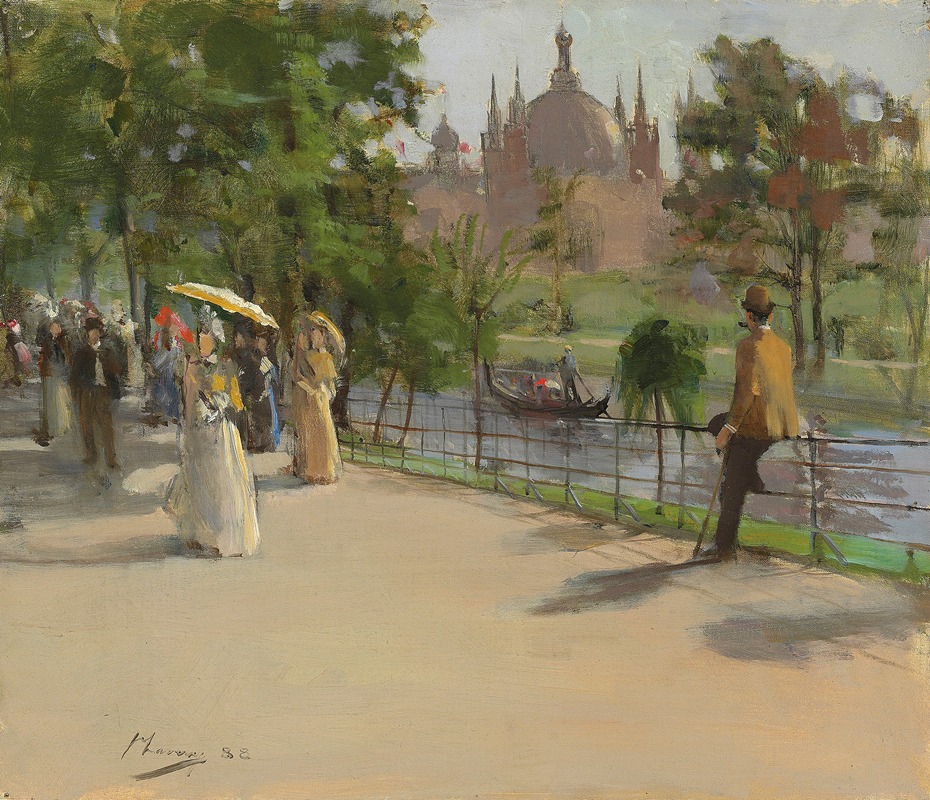
The Glasgow International Exhibition
A hand-painted replica of Sir John Lavery’s masterpiece The Glasgow International Exhibition, meticulously crafted by professional artists to capture the true essence of the original. Each piece is created with museum-quality canvas and rare mineral pigments, carefully painted by experienced artists with delicate brushstrokes and rich, layered colors to perfectly recreate the texture of the original artwork. Unlike machine-printed reproductions, this hand-painted version brings the painting to life, infused with the artist’s emotions and skill in every stroke. Whether for personal collection or home decoration, it instantly elevates the artistic atmosphere of any space.
The Glasgow International Exhibition by Sir John Lavery is a notable painting that captures the essence of the 1888 International Exhibition held in Glasgow, Scotland. Sir John Lavery, an acclaimed Irish painter, was known for his portraits and genre scenes, and this particular work stands as a testament to his skill in capturing significant cultural events.
The 1888 International Exhibition was a major event designed to showcase industrial, scientific, and artistic achievements from around the world. It was held at Kelvingrove Park, a prominent public park in Glasgow, and attracted millions of visitors. The exhibition featured a wide array of exhibits, including machinery, fine arts, and decorative arts, reflecting the industrial prowess and cultural richness of the late 19th century.
Lavery's painting depicts the bustling atmosphere of the exhibition, with a focus on the grand architecture and the diverse crowd of attendees. The composition is dynamic, with a lively interplay of light and shadow that highlights the vibrancy of the event. The artist's attention to detail is evident in the meticulous rendering of the exhibition buildings and the fashionable attire of the visitors, providing a vivid snapshot of the period.
One of the central elements of the painting is the Main Building, also known as the Palace of Industry, which was a striking example of Victorian architecture. The building's intricate design and imposing presence are captured with precision, emphasizing its role as the centerpiece of the exhibition. Surrounding the Main Building, Lavery includes various pavilions and outdoor exhibits, illustrating the extensive scope of the event.
The painting also reflects the social and cultural milieu of the time, with a diverse mix of people from different backgrounds and social classes. This inclusivity was a hallmark of the exhibition, which aimed to celebrate progress and innovation across all sectors of society. Lavery's portrayal of the crowd, with individuals engaged in conversation, exploration, and leisure, adds a human element to the grand spectacle.
Sir John Lavery's work on The Glasgow International Exhibition is not only an artistic achievement but also a historical document that offers insight into the significance of the 1888 event. The painting serves as a visual record of a moment when Glasgow was at the forefront of industrial and cultural development, reflecting the city's aspirations and achievements.
Today, The Glasgow International Exhibition by Sir John Lavery is appreciated for its historical value and artistic merit. It remains an important piece in the study of 19th-century exhibitions and the role they played in shaping public perception of progress and modernity. Lavery's ability to capture the spirit of the exhibition continues to resonate, offering viewers a glimpse into a pivotal moment in Glasgow's history.






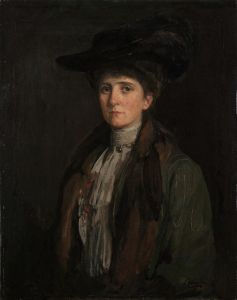
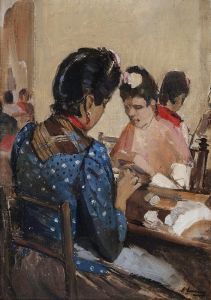

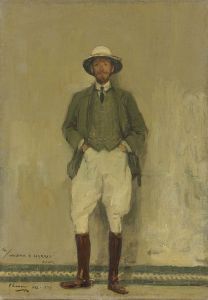
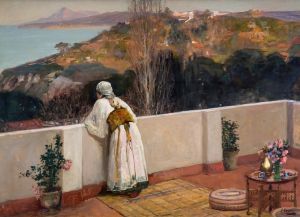
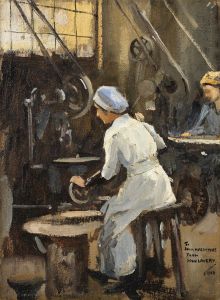

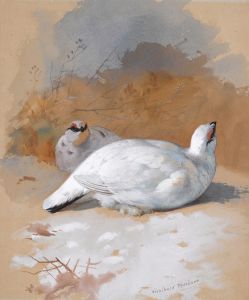
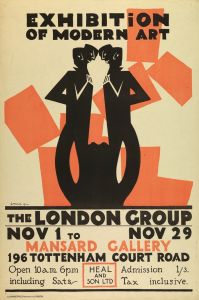

![Design for Figures of Music Building, New York World’s Fair, 1939.] [Elevation detail](/imgs/249284/s/winold-reiss-design-for-figures-of-music-building-new-york-worlds-fair-1939-elevation-detail-b48f5853.jpg)

